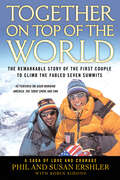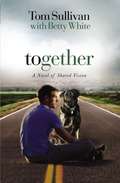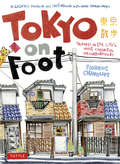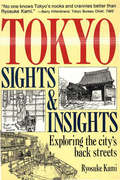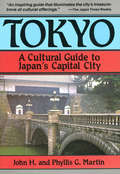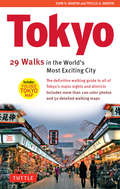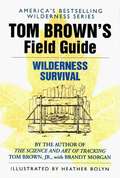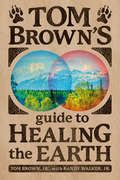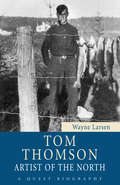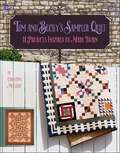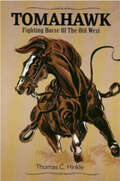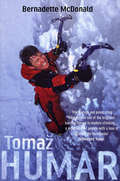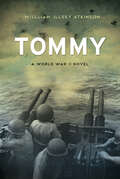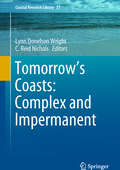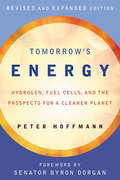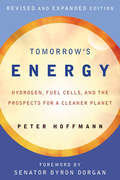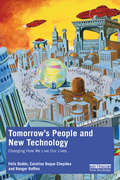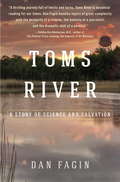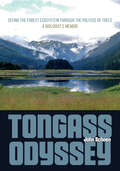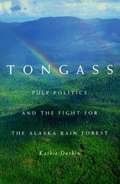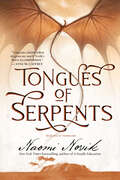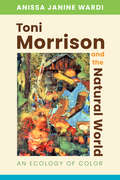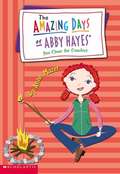- Table View
- List View
Together on Top of the World: The Remarkable Story of the First Couple to Climb the Fabled Seven Summits
by Phil Ershler Susan ErshlerOn May 16, 2002, Phil and Susan Ershler reached the top of Mt. Everest and became the first couple in history to scale the fabled Seven Summits. What made their achievement all the more remarkable was that Susan was not a mountain climber, but a high-powered Fortune 500 executive who had never hiked or climbed until she met Phil at the age of 36. Phil, a professional mountain guide who was the first American to summit Everest from its treacherous north face, had climbed his whole life with Crohn's disease, a chronic, debilitating illness. Adding to these challenges, just before their final summit, Phil was diagnosed with colon cancer, and the resulting surgeries and complications were expected to end his career. This is Susan and Phil's story: a tale of love set in the mountains, a story of triumphal highs and devastating lows in quest of a seemingly impossible dream.
Together: A Story of Shared Vision
by Tom Sullivan Betty WhiteFrom the book "If this dog loves me enough to lay down his life for my survival, how can I just give up?" One misstep on a mountain climbing trip plunged Brenden McCarthy into darkness by stealing his sight and everything else he held dear. But a too-independent guide dog named Nelson just might lead him back to life . . . if they don't kick him out of guide dog school first. Brenden can't accept the fact that he's lost his sight. And Nelson can't accept that he's been paired with someone other than his former master. Just as Brenden starts to live again, a devastating setback causes him to try to end it all. Brenden releases Nelson and sits down in the middle of an intersection. At that moment, everything changes when Nelson freely decides he'd rather join Brenden in death than live without him. Now they need a leap of faith and a love beyond words to make it.
Tokyo On Foot: Travels in the City's Most Colorful Neighborhoods
by Florent ChavouetThis prize-winning book is both an illustrated tour of a Tokyo rarely seen in Japan travel guides and an artist's warm, funny, visually rich, and always entertaining graphic memoir.<P><P>Florent Chavouet, a young graphic artist, spent six months exploring Tokyo while his girlfriend interned at a company there. Each day he would set forth with a pouch full of color pencils and a sketchpad, and visit different neighborhoods. This stunning book records the city that he got to know during his adventures. It isn't the Tokyo of packaged tours and glossy guidebooks, but a grittier, vibrant place, full of ordinary people going about their daily lives and the scenes and activities that unfold on the streets of a bustling metropolis.Here you find business men and women, hipsters, students, grandmothers, shopkeepers, policemen, and other urban types and tribes in all manner of dress and hairstyles. A temple nestles among skyscrapers; the corner grocery anchors a diverse assortment of dwellings, cafes, and shops--often tangled in electric lines. The artist mixes styles and tags his pictures with wry comments and observations. Realistically rendered advertisements or posters of pop stars contrast with cartoon sketches of iconic objects or droll vignettes.
Tokyo Sights and Insights
by Ryosuke KamiTokyo Sights and Insights is the unique work of Ryosuke Kami, artist, essayist, and native Tokyoite. Weekends Mr. Kami bicycles about his favorite city in search of Tokyo sights to capture on his sketch pad; weeknights he draws on these same sketches to produce the insights that fill this book.Don't look for Ryosuke Kami's sights in other books about Tokyo. Among his subjects are a surviving "milk hall," a replica of Mt. Hakone in the middle of Shinjuku, one shogun's ill-fated flagship, another shogun's lighthouse, and a tempura restaurant in the old Yoshiwara pleasure quarters that continues to serve patrons to this very day.Mr. Kami 's insights on matters historical, cultural, and quizzical are original too. From his book you will learn such things as the connection between bone-setting and judo, why people from Fukushima distrust those from Yamaguchi, why seaweed shops are located in Nihombashi, the unlikely fate of the last Tokugawa shogun, and the unlucky voyage of the Lucky Dragon V. It is common knowledge that Tokyo is one of the largest cities in the world; less well known is that it is also one of the world's most interesting . Unfortunately most visitors and many residents never begin to appreciate Tokyo. Ryosuke Kami , though, has spent years exploring and reflecting on his native city. The result is Tokyo Sights and Insights, a book certain to delight and educate first -time visitors and long-term residents alike.
Tokyo Sights and Insights
by Ryosuke KamiTokyo Sights and Insights is the unique work of Ryosuke Kami, artist, essayist, and native Tokyoite. Weekends Mr. Kami bicycles about his favorite city in search of Tokyo sights to capture on his sketch pad; weeknights he draws on these same sketches to produce the insights that fill this book.Don't look for Ryosuke Kami's sights in other books about Tokyo. Among his subjects are a surviving "milk hall," a replica of Mt. Hakone in the middle of Shinjuku, one shogun's ill-fated flagship, another shogun's lighthouse, and a tempura restaurant in the old Yoshiwara pleasure quarters that continues to serve patrons to this very day.Mr. Kami 's insights on matters historical, cultural, and quizzical are original too. From his book you will learn such things as the connection between bone-setting and judo, why people from Fukushima distrust those from Yamaguchi, why seaweed shops are located in Nihombashi, the unlikely fate of the last Tokugawa shogun, and the unlucky voyage of the Lucky Dragon V. It is common knowledge that Tokyo is one of the largest cities in the world; less well known is that it is also one of the world's most interesting . Unfortunately most visitors and many residents never begin to appreciate Tokyo. Ryosuke Kami , though, has spent years exploring and reflecting on his native city. The result is Tokyo Sights and Insights, a book certain to delight and educate first -time visitors and long-term residents alike.
Tokyo a Cultural Guide to Japan's Capital City
by John H. Martin Phyllis G. MartinDiscover, in a series of linked, engaging half-day excursions, the stories behind places like Hibiya's Hall of the Cry of the Stag and "Flying Head" of Marunouchi. Visit the sites where the Forty-Seven Ronin, the "last Samurai" General Nogi, and Yukio Mishima committed ritual Seppuku. In the sumo district see where the wrestlers fight, train and live, and just a bit farther on, the massive Thunder Gate of Senso-ji Temple.John and Phyllis Martin have visited Tokyo numerous times and know the city intimately. With detailed directions and maps, they introduce the background, the legends, and the sights that bring old Edo alive.
Tokyo: 29 Walks in the World's Most Exciting City
by John H. Martin Phyllis G. MartinTokyo: 29 Walks in the World's Most Exciting City is the only guide to the city that is exclusively a walking guide, with lively text full of facts and stories that emphasize the history, culture, architecture and spirit of the city and its neighborhoods. On foot and by train or subway, it takes you through the most fascinating parts of the modern megalopolis, while making the shogun's city--the Edo of samurai and geishas, merchants and artisans--and the outlines of old Tokyo come alive. From famous historical sites like the Imperial Palace to unique attractions like the Tsukiji Fish Market, this book offers something for every visitor.
Tokyo: 29 Walks in the World's Most Exciting City
by John H. Martin Phyllis G. MartinTokyo: 29 Walks in the World's Most Exciting City is the only guide to the city that is exclusively a walking guide, with lively text full of facts and stories that emphasize the history, culture, architecture and spirit of the city and its neighborhoods. On foot and by train or subway, it takes you through the most fascinating parts of the modern megalopolis, while making the shogun's city--the Edo of samurai and geishas, merchants and artisans--and the outlines of old Tokyo come alive. From famous historical sites like the Imperial Palace to unique attractions like the Tsukiji Fish Market, this book offers something for every visitor.
Tom Brown's Field Guide To Wilderness Survival
by Tom Brown Brandt MorganHere, in one essential volume, are the basics of wilderness survival. The most ancient and important skills, preserved for generations, are presented in a simple, easy-to-use format with clear illustrations and instructions. A complete must-have companion to the great outdoors. * How to build natural shelters in plains, woods, or deserts * How to get safe drinking water from plants, trees, the sun, or Earth Herself * How to make fire without matches and maintain it in any weather * How to find, stalk, kill, and prepare animals for food * The "big four" edible plants, and hundreds of others useful for both nutrition and medicine
Tom Brown's Guide to Healing the Earth
by Tom Brown Randy WalkerAs a child he was taught to respect nature by an Apache elder he called Grandfather, now as a bestselling author and master tracker Tom Brown, Jr., shares his secrets for nurturing and saving our planet. Tom Brown, Jr., is America's most acclaimed outdoorsman, tracker, and teacher. When he was eight he met Stalking Wolf, an Apache elder who taught the young man how to survive in the wild, and more importantly, how to value our place in the natural order. For more than three decades, Tom Brown, Jr., has shared these insights with the world through teaching, writing, and film. Now, for the first time, he has detailed actions that each of us can take to help heal our ailing planet.
Tom Thomson: Artist of the North
by Wayne LarsenTom Thomson (1877-1917) occupies a prominent position in Canada’s national culture and has become a celebrated icon for his magnificent landscapes as well as for his brief life and mysterious death. The shy, enigmatic artist and woodsman’s innovative painting style produced such seminal Canadian images as The Jack Pine and The West Wind, while his untimely drowning nearly a century ago is still a popular subject of fierce debate. Originally a commercial artist, Thomson fell in love with the forests and lakes of Ontario’s Algonquin Park and devoted himself to rendering the north country’s changing seasons in a series of colourful sketches and canvases. Dividing his time between his beloved wilderness and a shack behind the Studio Building near downtown Toronto, Thomson was a major inspiration to his painter friends who, not long after his death, went on to change the course of Canadian art as the influential - and equally controversial - Group of Seven.
Tom and Becky's Sampler Quilt: 11 Projects Inspired by Mark Twain
by Christina McCourtCreate quilts inspired by beloved characters Tom Sawyer and Becky Thatcher. Having lived just outside of Hannibal, Missouri, all of her life, Christina McCourt became immersed in all things Mark Twain. The sweet and simple projects in this book are dedicated to his beloved characters Tom Sawyer and Becky Thatcher and their budding romance. The centerpiece of the collection is the sampler quilt, where in which each block represents Tom, Becky, or the people and adventures in their lives. The quilts “Becky’s Waltz” and “Tom’s Fancy” stand out as wonderful examples of Christina’s eye for color and pattern. Other quilt projects include the graphic and colorful “Lost in the Cave” quilt and the “Poor Boy Huck” quilt. • Photography done in Hannibal, MissouriMO, at the Mark Twain Boyhood Home & Museum • 11 unique blocks, which can be —combined to make a beautiful sampler quilts or used in your own quilt designs of their own • Sweet and simple designs for any home
Tomahawk: Fighting Horse of the Old West
by Thomas C. HinkleA young and spirited colt and a boy who loves horses match wits with a band of ruthless horse rustlers, determined to break the colt. How Tomahawk wins through to peace and happiness is told in this stirring adventure of the Western prairies. Tomahawk's mother, Old White Face, was a wild horse, captured by Jim Arnold, rancher, when Tomahawk was a young colt. Eventually, they let her go, but Tomahawk stayed, because of his pal, young Joe Arnold. Tomahawk's happy life with Joe ended when he was stolen by horse rustlers. Then followed an exciting period when Tomahawk, evading the rustlers, lived a perilous life in the wild country of the Old West. His fight with the old black cow, the terror of the prairies; his swim for his life in a swollen stream, filled with stampeding cattle milling around the desperate horse, and the climax in a wild horse trap, from which he is rescued by Jim Arnold, are only a few of the adventures that all Hinkle readers have come to look for in his books. Tomahawk is a great horse hero, worthy to stand beside Silver and Mustang.
Tomaz Humar
by Bernadette McDonaldIn August, 2005, Tomaž Humar was trapped on a narrow ledge at 5900 metres on the formidable Rupal Face of Nanga Parbat. He had been attempting a new route, directly up the middle of the highest mountain face in the world - solo. After six days he was out of food, almost out of fuel and frequently buried by avalanches. Three helicopters were poised for a brief break in the weather to pluck him off the mountain. Because of the audacity of the climb, the fame of the climber, the high risk associated with the rescue, and the hourly reports posted on his base-camp website, the world was watching. Would this be the most spectacular rescue in climbing history? Or a tragic - and very public - death in the mountains?Years before, as communism was collapsing and the Balkans slid into chaos, Humar was unceremoniously conscripted into a dirty war that he despised, where he observed brutal and inhumane atrocities that disgusted him. Finally he did the unthinkable: he left and finally arrived home in what had become a new country - Slovenia. He returned to climbing, and within very few years, he was among the best in the world. Reinhold Messner, among others, called him the most remarkable mountain climber of his generation. His routes are seldom repeated; most consider them to be suicidal; yet he often climbs them solo. As this book was being written, he achieved the first-ever solo ascent of the east summit of Annapurna.Tomaž Humar has cooperated with Bernadette McDonald, the distinguished former director of the Banff Festival and author of several books on mountaineering, to tell his utterly remarkable story.
Tommy: A World War II Novel
by William Illsey AtkinsonA mathematician finds himself in the midst of the Pacific War in this &“historical novel that can be appreciated by anyone, not just the history buffs&” (Scene magazine). April 1945: In the aftermath of the battle for Okinawa, Tommy stands on the deck of the USS Bataan, the Independence-class aircraft carrier that he&’s called home for a year. Once, he was a student in the classrooms of MIT. Now, thousands of miles away, he is surrounded by horrors—but uses his mathematical and navigational expertise to do his best to minimize the casualties. In this novel, William Illsey Atkinson tells the story of Japan&’s Operation Ten-Go, and the fierce battle that sent dozens of vessels to their watery grave while hundreds of others were damaged from the air. Tommy spans the vast experience of one man&’s life, from his hardscrabble childhood in early twentieth-century Dorris, California, to his heroic efforts in the South Pacific and beyond.
Tomorrow's Coasts: Complex and Impermanent (Coastal Research Library #27)
by Lynn Donelson Wright C. Reid NicholsThis book is intended as a conceptual roadmap to show how some of the numerous pieces of complex coastal systems intersect and might interact under changing future environmental regimes. It is addressed to a non-technical but environmentally literate audience that includes the lay public, policy makers, planners, engineers and academics interested in the causes and consequences of global changes as they are likely to affect coastal systems. The book also outlines some strategies for anticipating and responding to the challenges that lie ahead. The purpose is not to offer a technical treatise on how to build better numerical models or to provide the cognoscenti with new scientific details or theories. Quite on the contrary the authors aim to provide a holistic, easy-accessible overview of coastal systems and therefore use a writing style that is non-technical, nonmathematical and non-jargonized throughout. Wherever scientific terms are required to avoid ambiguity, a clear and simple definition is presented and those definitions are repeated in the glossary. The authors aim to communicate with all who care about the future of coastal environments. In Part 1, they present some underlying general “big picture” concepts that are applicable to coastal processes and coastal change worldwide. Part 2 reviews some of the more important physical, ecological and societal causes and outcomes of coastal change. A selection of case studies of some prominent and highly vulnerable coastal regions is presented in Part 3. Some strategies for facilitating and supporting collaboration among the global scientific community to enhance future coastal resilience are outlined in Part 4.
Tomorrow's Energy
by Peter HoffmannHydrogen is the most abundant element in the universe. An invisible, tasteless, colorless gas, it can be converted to nonpolluting, zero-emission, renewable energy. When burned in an internal combustion engine, hydrogen produces mostly harmless water vapor. It performs even better in fuel cells, which can be 2. 5 times as efficient as internal-combustion engines. Zero-emission hydrogen does not contribute to CO2-caused global warming. Abundant and renewable, it is unlikely to be subject to geopolitical pressures or scarcity concerns. In this new edition of his pioneering book Tomorrow's Energy, Peter Hoffmann makes the case for hydrogen as the cornerstone of a new energy economy. Hoffmann covers the major aspects of hydrogen production, storage, transportation, fuel use, and safety. He explains that hydrogen is not an energy source but a carrier, like electricity, and introduces the concept of "hydricity," the essential interchangeability of electricity and hydrogen. He brings the hydrogen story up to date, reporting on the latest developments, including new hydrogen and fuel-cell cars from GM, Daimler, BMW, Honda, and Toyota. He describes recent political controversies, including Obama administration Energy Secretary (and Nobel laureate in Physics) Steven Chu's inexplicable dismissal of hydrogen--which puts him at odds with major automakers, German Chancellor Angela Merkel, and others. Our current energy system is a complex infrastructure, and phasing in hydrogen will take effort and money. But if we consider the real costs of fossil fuels--pollution and its effects, international tensions over gas and oil supplies, and climate change--we would be wise to promote its development.
Tomorrow's Energy, revised and expanded edition: Hydrogen, Fuel Cells, and the Prospects for a Cleaner Planet (The\mit Press Ser.)
by Peter HoffmannHow the use of nonpolluting, zero-emission hydrogen as fuel could be the cornerstone of a new energy economy.Hydrogen is the most abundant element in the universe. An invisible, tasteless, colorless gas, it can be converted to nonpolluting, zero-emission, renewable energy. When burned in an internal combustion engine, hydrogen produces mostly harmless water vapor. It performs even better in fuel cells, which can be 2.5 times as efficient as internal-combustion engines. Zero-emission hydrogen does not contribute to CO2-caused global warming. Abundant and renewable, it is unlikely to be subject to geopolitical pressures or scarcity concerns. In this new edition of his pioneering book Tomorrow's Energy, Peter Hoffmann makes the case for hydrogen as the cornerstone of a new energy economy.Hoffmann covers the major aspects of hydrogen production, storage, transportation, fuel use, and safety. He explains that hydrogen is not an energy source but a carrier, like electricity, and introduces the concept of “hydricity,” the essential interchangeability of electricity and hydrogen. He brings the hydrogen story up to date, reporting on the latest developments, including new hydrogen and fuel-cell cars from GM, Daimler, BMW, Honda, and Toyota. He describes recent political controversies, including Obama administration Energy Secretary (and Nobel laureate in Physics) Steven Chu's inexplicable dismissal of hydrogen—which puts him at odds with major automakers, German Chancellor Angela Merkel, and others.Our current energy system is a complex infrastructure, and phasing in hydrogen will take effort and money. But if we consider the real costs of fossil fuels—pollution and its effects, international tensions over gas and oil supplies, and climate change—we would be wise to promote its development.
Tomorrow's People and New Technology: Changing How We Live Our Lives
by Felix Dodds Carolina Duque Chopitea Ranger RuffinsAs we witness a series of social, political, cultural, and economic changes/disruptions this book examines the Fourth Industrial Revolution and the way emerging technologies are impacting our lives and changing society. The Fourth Industrial Revolution is characterised by the emergence of new technologies that are blurring the boundaries between the physical, the digital, and the biological worlds. This book allows readers to explore how these technologies will impact peoples’ lives by 2030. It helps readers to not only better understand the use and implications of emerging technologies, but also to imagine how their individual life will be shaped by them. The book provides an opportunity to see the great potential but also the threats and challenges presented by the emerging technologies of the Fourth Industrial Revolution, posing questions for the reader to think about what future they want. Emerging technologies, such as robotics, artificial intelligence, big data and analytics, cloud computing, nanotechnology, biotechnology, the Internet of Things, fifth-generation wireless technologies (5G), and fully autonomous vehicles, among others, will have a significant impact on every aspect of our lives, as such this book looks at their potential impact in the entire spectrum of daily life, including home life, travel, education and work, health, entertainment and social life. Providing an indication of what the world might look like in 2030, this book is essential reading for students, scholars, professionals, and policymakers interested in the nexus between emerging technologies and sustainable development, politics and society, and global governance.
Toms River
by Dan Fagin<P>The riveting true story of a small town ravaged by industrial pollution, Toms River melds hard-hitting investigative reporting, a fascinating scientific detective story, and an unforgettable cast of characters into a sweeping narrative in the tradition of A Civil Action, The Emperor of All Maladies, and The Immortal Life of Henrietta Lacks. <P>One of New Jersey's seemingly innumerable quiet seaside towns, Toms River became the unlikely setting for a decades-long drama that culminated in 2001 with one of the largest legal settlements in the annals of toxic dumping. <P>A town that would rather have been known for its Little League World Series champions ended up making history for an entirely different reason: a notorious cluster of childhood cancers scientifically linked to local air and water pollution. <P>For years, large chemical companies had been using Toms River as their private dumping ground, burying tens of thousands of leaky drums in open pits and discharging billions of gallons of acid-laced wastewater into the town's namesake river. <P>In an astonishing feat of investigative reporting, prize-winning journalist Dan Fagin recounts the sixty-year saga of rampant pollution and inadequate oversight that made Toms River a cautionary example for fast-growing industrial towns from South Jersey to South China. <P>He tells the stories of the pioneering scientists and physicians who first identified pollutants as a cause of cancer, and brings to life the everyday heroes in Toms River who struggled for justice: a young boy whose cherubic smile belied the fast-growing tumors that had decimated his body from birth; a nurse who fought to bring the alarming incidence of childhood cancers to the attention of authorities who didn't want to listen; and a mother whose love for her stricken child transformed her into a tenacious advocate for change. <P>A gripping human drama rooted in a centuries-old scientific quest, Toms River is a tale of dumpers at midnight and deceptions in broad daylight, of corporate avarice and government neglect, and of a few brave individuals who refused to keep silent until the truth was exposed. <P><b> Winner of the Pulitzer Prize</b> <P><b> Winner of The New York Public Library's Helen Bernstein Book Award </b> <P><b>A New York Times Bestseller</b>
Tongass Odyssey: Seeing the Forest Ecosystem through the Politics of Trees (Alaska)
by John SchoenTongass Odyssey is a biologist’s memoir of personal experiences over the past four decades studying brown bears, deer, and mountain goats and advocating for conservation of Alaska’s Tongass National Forest. The largest national forest in the nation, the Tongass encompasses the most significant expanse of intact old-growth temperate rainforest remaining on Earth. Tongass Odyssey is a cautionary tale of the harm that can result when science is eclipsed by politics that are focused on short-term economic gain. Yet even as those problems put the Tongass at risk, the forest also represents a unique opportunity for conserving large, intact landscapes with all their ecological parts, including wild salmon, bears, wolves, eagles, and other wildlife. Combining elements of personal memoir, field journal, natural history, conservation essay, and philosophical reflection, Tongass Odyssey tells an engaging story about an enchanting place.
Tongass: Pulp Politics and the Fight for the Alaska Rain Forest
by Kathie Durbin1. Tongass National Forest (Alaska)-Management-Logging-Environmental aspects- Wood-pulp industry-Rain forest conservation.
Tongues of Serpents: A Novel of Temeraire (Temeraire #6)
by Naomi NovikNaomi Novik "s stunning series of novels follow the global adventures of Captain William Laurence and his fighting dragon Temeraire as they are thrown together to fight for Britain during the turbulent time of the Napoleonic Wars. Convicted of treason and stripped of rank and standing, Temeraire and Lawrence are transported to the prison colony at New South Wales. With them travel three dragon eggs destined to be handed over to second-rate officers willing to accept so remote an assignment " including one former acquaintance, Captain Rankin, whose cruelty once cost a dragon its life. They arrive at a young Australian colony in turmoil after the overthrow of the military governor, William Bligh " formerly Captain Bligh, late of HMS Bounty. Eager to escape the political quagmire, Laurence and Temeraire accept a mission to pioneer a route through the forbidding Blue Mountains and into the interior of Australia. But when one of the dragon eggs is stolen, the surveying expedition becomes a desperate race to recover it before the dragonet hatches " a race that leads to a shocking discovery and a dangerous new obstacle in the global war between Britain and France.
Toni Morrison and the Natural World: An Ecology of Color
by Anissa Janine WardiCritics have routinely excluded African American literature from ecocritical inquiry despite the fact that the literary tradition has, from its inception, proved to be steeped in environmental concerns that address elements of the natural world and relate nature to the transatlantic slave trade, plantation labor, and nationhood. Toni Morrison’s work is no exception. Toni Morrison and the Natural World: An Ecology of Color is the first full-length ecocritical investigation of the Nobel Laureate’s novels and brings to the fore an unequaled engagement between race and nature.Morrison’s ecological consciousness holds that human geographies are enmeshed with nonhuman nature. It follows, then, that ecology, the branch of biology that studies how people relate to each other and their environment, is an apt framework for this book. The interrelationships and interactions between individuals and community, and between organisms and the biosphere, are central to this analysis. They highlight that the human and nonhuman are part of a larger ecosystem of interfacings and transformations. Toni Morrison and the Natural World is organized by color, examining soil (brown) in The Bluest Eye and Paradise; plant life (green) in Song of Solomon, Beloved, and Home; bodies of water (blue) in Tar Baby and Love; and fire (orange) in Sula and God Help the Child. By providing a racially inflected reading of nature, Toni Morrison and the Natural World makes an important contribution to the field of environmental studies and provides a landmark for Morrison scholarship.
Too Close for Comfort (The Amazing Days of Abby Hayes #11)
by Anne MazerAbby's family is going camping. She is allowed to bring a friend. Her best friend, Jessica, has moved away. Abby decides to invite Hannah, a new girl in town. Then she starts to regret it. Could any new friendship stand a week away with the Hayeses?
